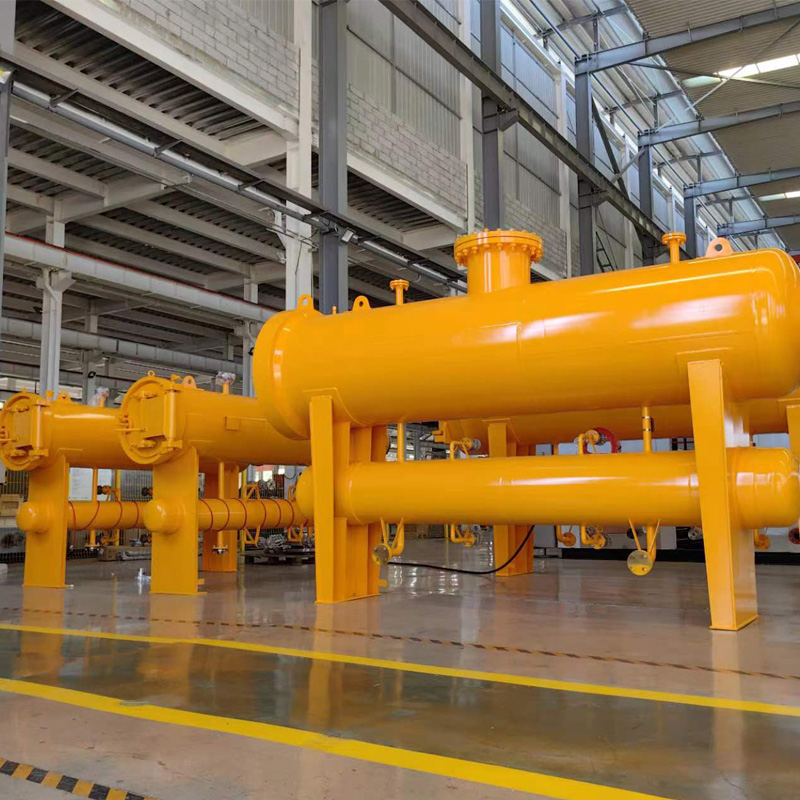
Dec . 22, 2024 08:30
Back to list
محطة تخفيض ضغط الغاز
Gas Pressure Reducing Stations Essential Components of Natural Gas Infrastructure
Gas Pressure Reducing Stations (GPRs) hold a crucial role in the natural gas supply chain, ensuring the safe and efficient delivery of natural gas from production facilities to end users. As natural gas travels through pipelines, it experiences substantial fluctuations in pressure due to various factors, such as geological formations and the distances it must traverse. Therefore, GPRs are implemented at strategic locations to manage these pressure variations and maintain a stable supply.
Functionality of Gas Pressure Reducing Stations
The primary function of a GPR is to reduce the high pressure of natural gas to a lower, more manageable level suitable for distribution. This process involves several key components, including pressure regulators, relief valves, and instrumentation for monitoring pressure and flow rates. The GPR typically receives high-pressure gas from the transmission line, which can range anywhere from 300 psi to over 1,500 psi, depending on the source.
Upon entering the station, the gas undergoes a reduction in pressure, often through a series of valves that open and close to control the flow. The pressure regulators adjust the gas pressure in accordance with the demands of the downstream distribution network, ensuring that consumers receive gas at a consistent and safe pressure, usually ranging from 1 psi to 60 psi for residential use.
.
Effective pressure regulation is vital for several reasons. Firstly, it prevents excessive pressure from reaching homes and businesses, which could lead to dangerous situations, including gas leaks or ruptured pipelines. Secondly, by maintaining stable pressure levels, GPRs help protect the integrity of the system and its components, thereby prolonging the lifespan of pipelines and equipment. Furthermore, proper regulation assists in optimizing energy consumption, contributing to a more sustainable use of natural resources.
محطة تخفيض ضغط الغاز

Location and Design Considerations
The location of GPRs is determined by multiple factors, including the layout of the pipeline network, the population density of the surrounding area, and the expected demand for gas. These stations are often equipped with safety features, including emergency shut-off valves, to mitigate risks associated with gas leaks or system failures. The design of a GPR must also consider environmental impact, as stations are subject to regulations aimed at minimizing noise and emissions.
Technological Advancements
As technology continues to evolve, GPRs have also benefited from innovations that enhance their efficiency and safety. Modern GPRs may integrate real-time monitoring systems that utilize sensors and data analytics to optimize pressure management. These advancements enable operators to detect anomalies in the system, allowing for proactive maintenance and reducing the likelihood of accidents.
Moreover, advances in automation have led to remote control capabilities for many GPRs, allowing operators to manage and oversee multiple stations from a centralized location. This not only increases operational efficiency but also enhances response times during emergencies or maintenance scenarios.
Conclusion
Gas Pressure Reducing Stations are integral to the safe and efficient transportation of natural gas. With their ability to manage pressure fluctuations, these stations ensure that consumers receive a reliable supply of energy while safeguarding the infrastructure from potential hazards. As the demand for natural gas continues to grow, the importance of modernizing and maintaining GPRs will only increase, making them a vital focus for energy companies and regulatory bodies alike. Through continued innovation and investment, the future of natural gas distribution can be both efficient and secure, benefiting consumers and the environment.
Latest news
-
Safety Valve Spring-Loaded Design Overpressure ProtectionNewsJul.25,2025
-
Precision Voltage Regulator AC5 Accuracy Grade PerformanceNewsJul.25,2025
-
Natural Gas Pressure Regulating Skid Industrial Pipeline ApplicationsNewsJul.25,2025
-
Natural Gas Filter Stainless Steel Mesh Element DesignNewsJul.25,2025
-
Gas Pressure Regulator Valve Direct-Acting Spring-Loaded DesignNewsJul.25,2025
-
Decompression Equipment Multi-Stage Heat Exchange System DesignNewsJul.25,2025

